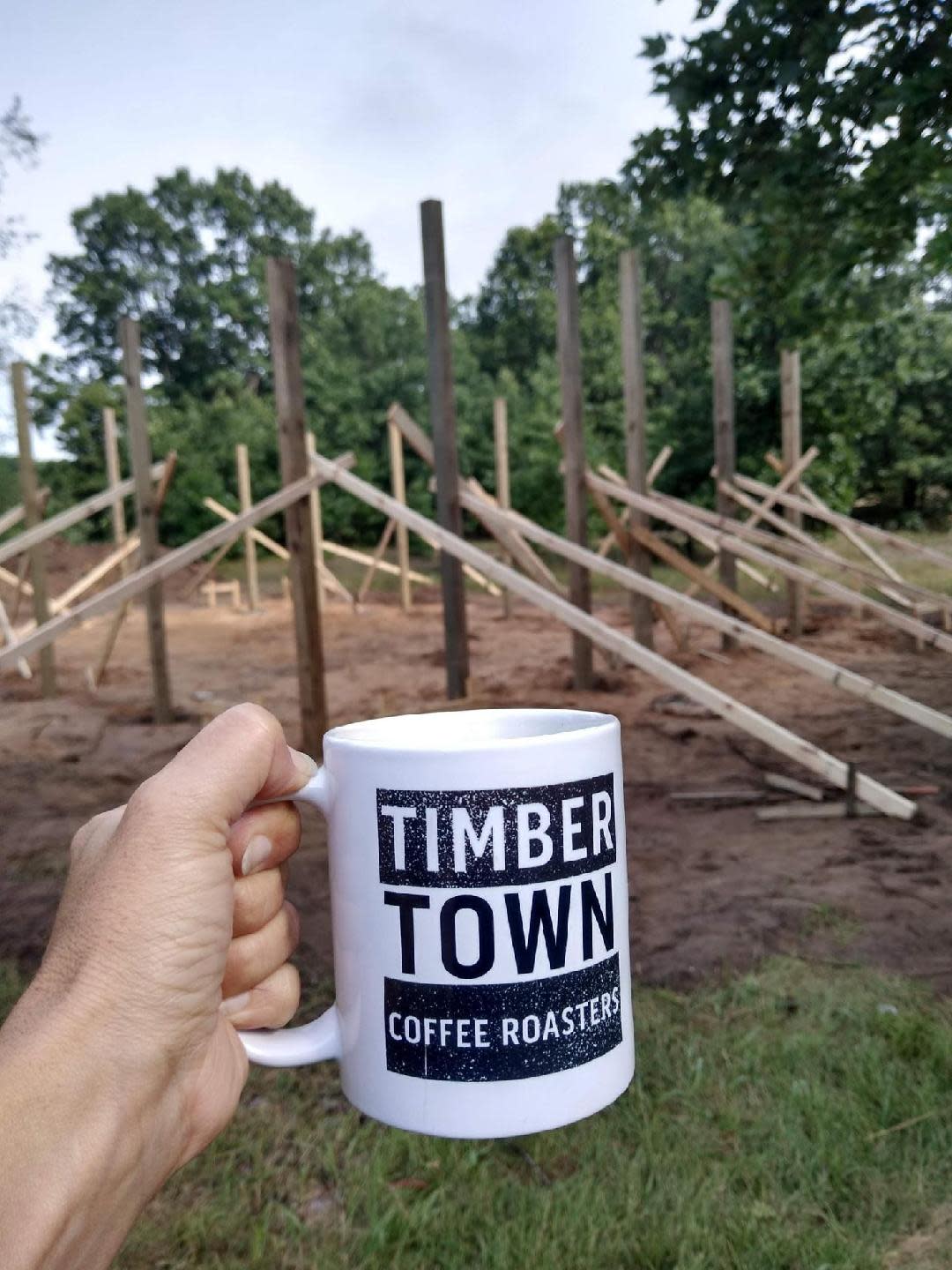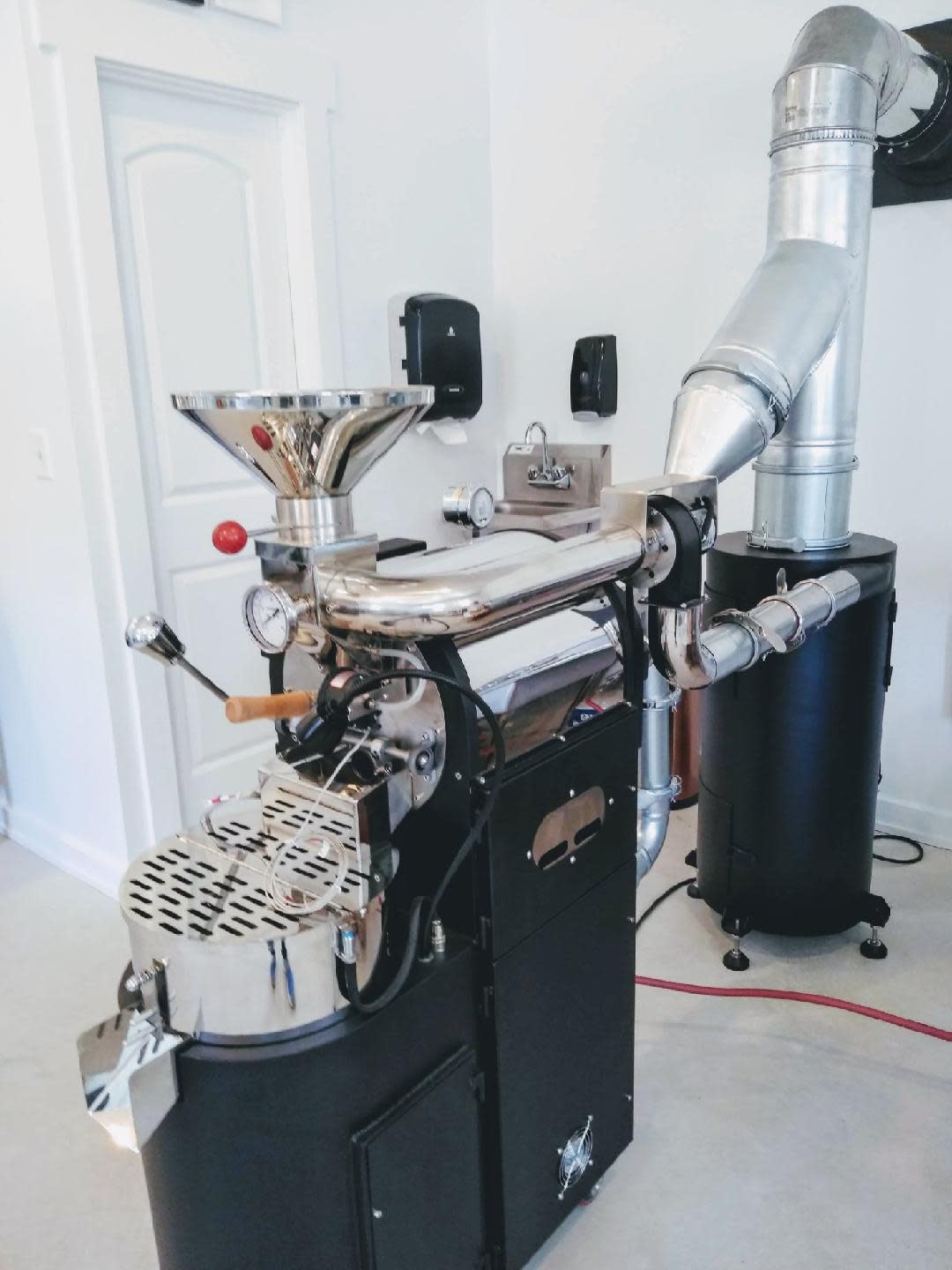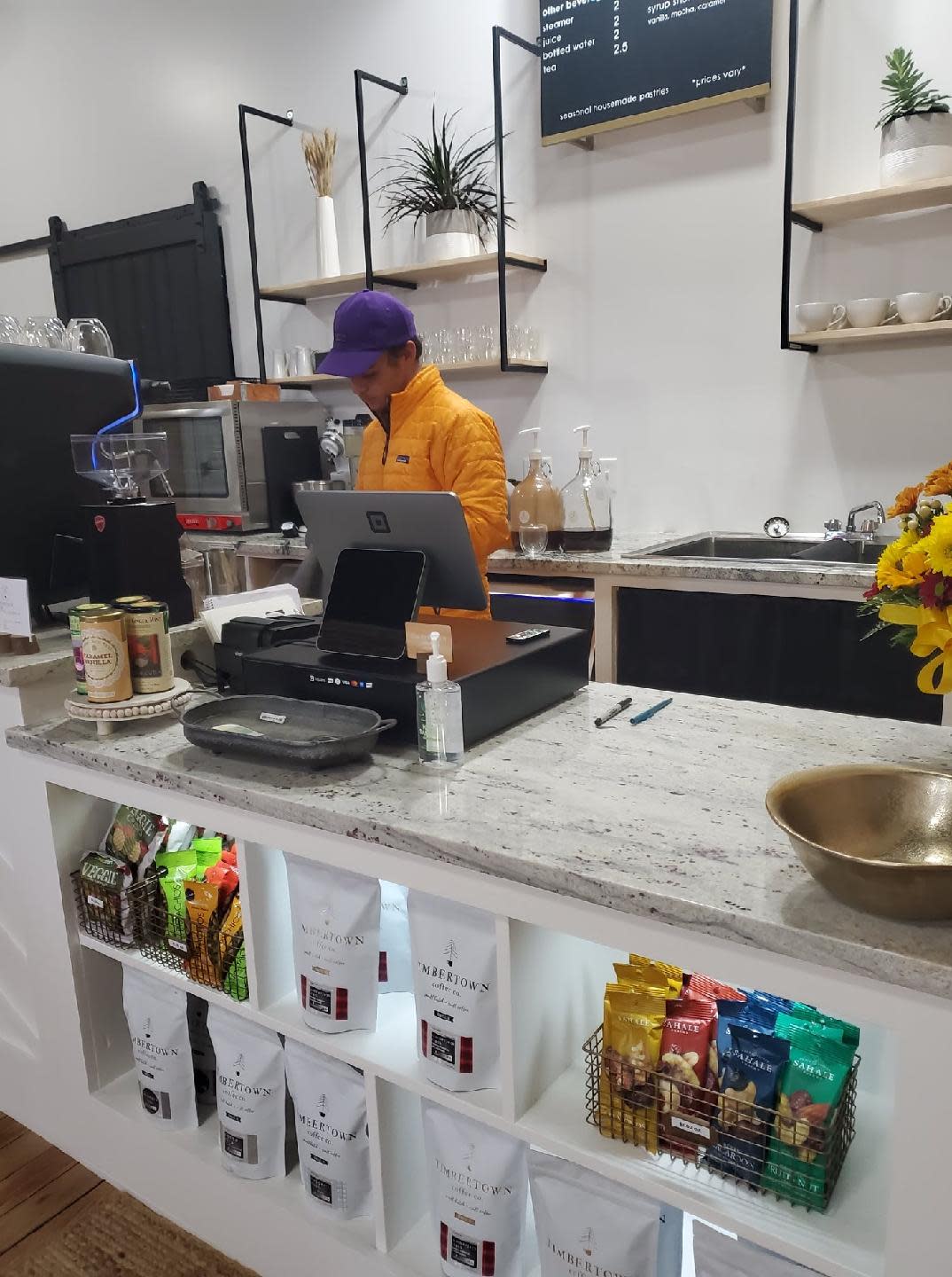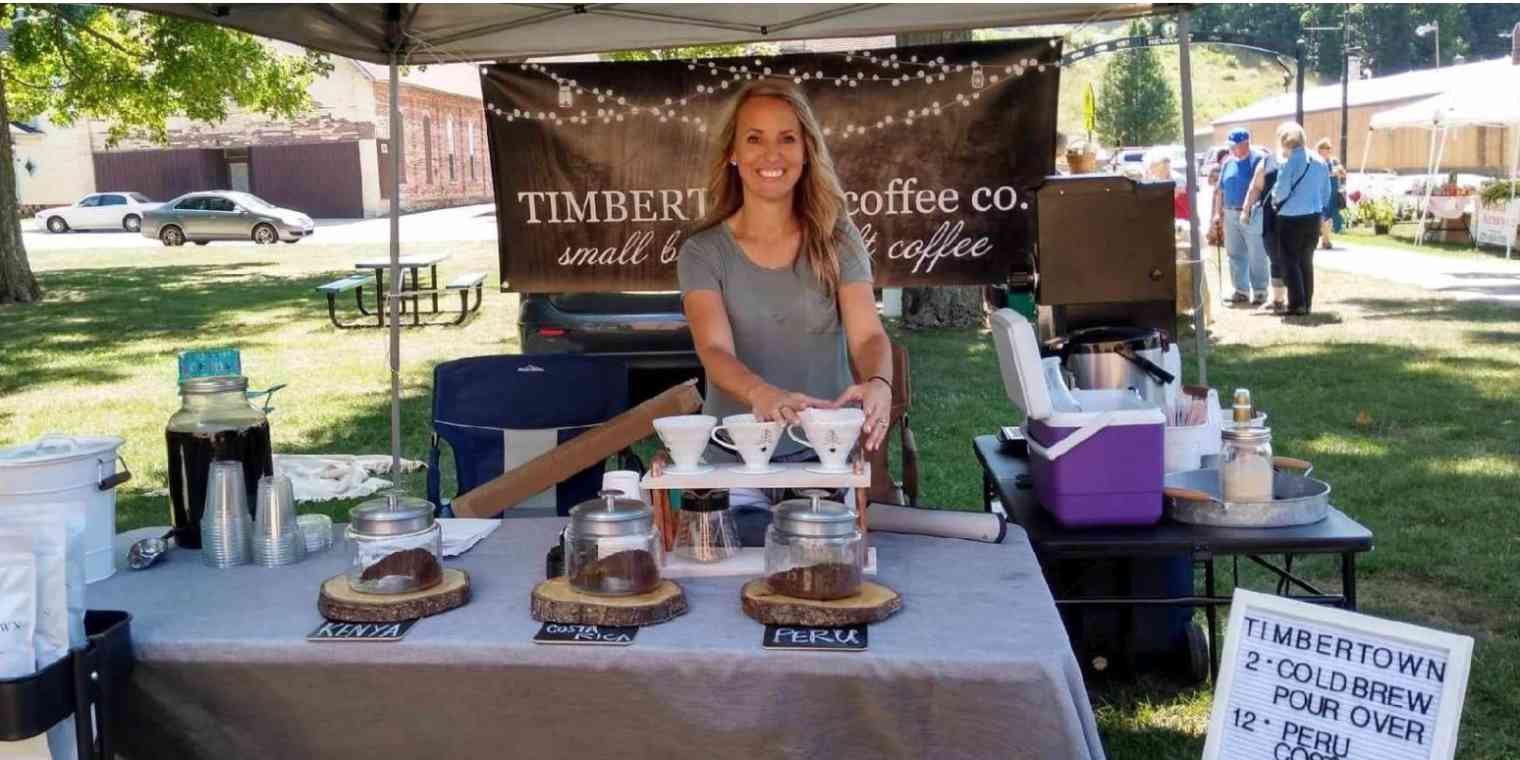We waited for a long time before creating a comprehensive digital marketing plan for our specialty coffee roasting business. In fact, strategy and planning wasn't something we even thought about when we first began. We were just happy getting our business moving in the right direction and roasting our beans.
Our story is similar to many small roasters passionate about their beancraft. We live in a region of small towns, farmland, and wilderness. It's wonderful. It's home. But it's not the urban center of cafes, espresso lattes, and baristas.
Initially, we just wanted some good specialty coffee for ourselves. We were looking for it here, couldn't find any, and so we made our own.
In the process, we thought we could make a business out of it.
This wasn't my first attempt at building a business. As a stay-at-home mom, I had tried many other times to build something that looked like dependable at-home income. I handmade wreaths for a while and tried upscaling furniture. These were mildly successful.
But the coffee business was the one that finally stuck. And we intentionally had no official business plan because we felt if we analyzed the business too much, we'd lose our focus and never launch. Instead, we found a small roasting machine and someone who would sell us wholesale beans, and we just started.
One of our goals was to teach our kids this kind of can-do attitude: that the best thing is just to start. That attitude defined our approach to everything during these first years, including digital marketing.
From the beginning, we wanted to be online—we just didn't know how. We opted to get a small Weebly site up and running and figure the rest out as the business grew. Our first Christmas in business, we started with this makeshift website, a Google Docs order form, and plenty of Facebook friends supporting us.
We didn't know how far it would actually take us.
As you scale your small business marketing, take a look at these 4 ways to use marketing automation to grow your business.
Roasting the town
So, from the onset, we didn't have a plan—period. No business plan written down, no digital marketing plan in place. But we did have a mission. Really we had several, but one of our biggest was to focus on our local community.
This community-focused mission is reflected in our brand.

Our name, Timbertown Coffee Co., references the history of our small town in Northern Michigan, which was once a bustling lumber town with a broad river flowing through its center. Our brand is intentionally earthy because we wanted to give expression to the folks that live around here—outdoorsy, rugged, of the earth.
During the early days, we used Facebook and Instagram as our primary methods to communicate with our customers, but we only marketed to the locals. We didn't run any Facebook ads to coffee lovers nationwide. We didn't run any ads at all. We just posted to our friends and family and the people we met while working at our local farmer's market, walking our city sidewalks, and attending our school events.
Starting small doesn't mean staying small. Here's a look at how small-scale marketing can help your growing business.
Our community made sure to support us back that first year, too.
They bought coffee and celebrated our wins. That first Christmas, we sold a ton of products through these community connections, and much of it was through our unrefined website, using that Google Docs order form and Facebook to drive traffic.
In 2019, we built a dedicated space on our land for a bigger roaster and became a licensed food processor. Continuing with our community focus, we held an event to support small businesses in our area and created a market in our newly-built space where many of these local businesses could sell their products.

We increased our Facebook and Instagram posts and even tried a new subscription service on our website. We used an app that was supposed to take care of the subscriptions while our regular orders would go through Square, our payment processing software. Initially, it was great. We loved the subscription model, but unfortunately, the app prevented our regular orders from going through, and lacking the technical skills, we had to shelve it.
This was one of the disadvantages of trying to do digital marketing DIY for an established business. A starter site can only take a business so far.
Building the brick-and-mortar business
As we gained more clients, we had the opportunity to start a brick-and-mortar shop in our community downtown. We met a couple who bought a building they wanted to turn into a hotel so they could offer their fly fishing clients a place to stay along the river. They invited us to set up a cafe in the hotel where we could sell our coffee. Their idea was that both of our businesses would get more exposure if we worked together instead of going it alone.
This was our first experience with co-marketing, and it marked another step in our evolution as a business. Now there are a total of four businesses in the building, and we all work together to encourage and help bring in business for one another.

As we grew this side of our business, we found ourselves needing to unify everything. Despite having multiple sides to our growing business—the cafe, the roasting house, and the business online—we didn't have a central place where all of it was connected. A new website was the obvious solution.
Something else happened during this period. As we focused on our brick-and-mortar business and our roasting house, our online business started to lag. Because the majority of our customers come from our local community, this is entirely explainable.
More of our customers were now buying from us at our physical locations, and so our online sales dropped significantly. We knew we needed to start looking for a bigger audience. We started thinking more in-depth about a strategic, comprehensive digital marketing plan, something that would guide us well into the future.
Caffeinating the web
Today we're ready to move online with more focus and precision, and we're fully fleshing out our digital marketing strategy. We want to see our stagnating sales pick up online, and besides that, we want to grow.
As we think about this more, we want to incorporate some of the features that contributed to our early success:
That can-do attitude (taking action and embracing experimentation)
Being community-minded (just building a bigger community)
Co-marketing (teaming with other businesses)
We also want to avoid some of our early mistakes. For us, that means working with a digital marketing agency. Working with an agency means we can hopefully avoid the wonky website bugs we had in the past. We think this will also help us increase our business much faster than if we decided to continue to go it alone.
But it also means we need to spend some money. If we're going to do that, we need to make practical choices to ensure profitability and growth and focus on the stuff that really matters to our business—like selling great coffee.
We're still planning on doing some of this on our own. So as much as we can, we plan to take advantage of the many tools companies like Zapier offer for small businesses.
Zapier is a no-code automation tool that lets you connect your apps into automated workflows, so that every person and every business can move forward at growth speed. Learn more about how it works.
The pour over
In coffee-speak, pour over is the process of hand pouring kettle-hot water over a filter paper in a funnel without a machine. For us, this is a metaphor for what we've been doing up to this point in our business.
We didn't have much of a digital marketing plan because we were focused on our local ground game. We were building our business offline without much help from the machine.
But now, as we take to the internet to build out the scope and influence of our coffee business, we're doing another kind of pour over—or rather, pore over. We're poring over resources and research to help us create the best digital marketing plan for our business. This will help us sculpt a digital marketing plan that fits our business objectives, mission, and character. It will prevent us from getting roasted online and help us sell more coffee.
Want to follow along with Timbertown's digital marketing journey? Read about how they're doing research for their digital marketing strategy.





